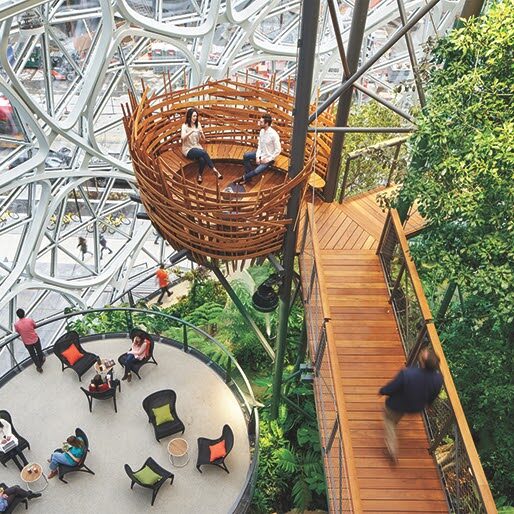
The concept of biophilic design implies that humans hold a biological need for connection with nature on physical, mental, and social levels. This connection affects our personal well-being, productivity, and societal relationships.
Biophilic design is an architectural design framework that weaves the patterns and forms of nature into the built environment to strengthen the human-nature connection.
Hospitality & Retail Benefits
-
Willing to pay 23% more for hotel rooms
-
Willing to pay 13% more for goods and services
Workplace Benefits
-
Office Productivity Increase of 8%
-
Rate of Well-Being Increase of 13%
-
Decreased Absenteeism & Increased Creativity
Healthcare Industry Benefits
-
Post-Operative Recovery Times Decrease by 8.5%
-
Use of Pain Meds Decreases by 22%
Educational Benefits
-
Increased Rates of Learning by 20 - 25%
-
Increased Attention, Attendance, and Test Scores
Biophilic Design Patterns
Terrapin Bright Green, a leading environmental design consultancy firm, developed 14 patterns useful to designers of the built environment.